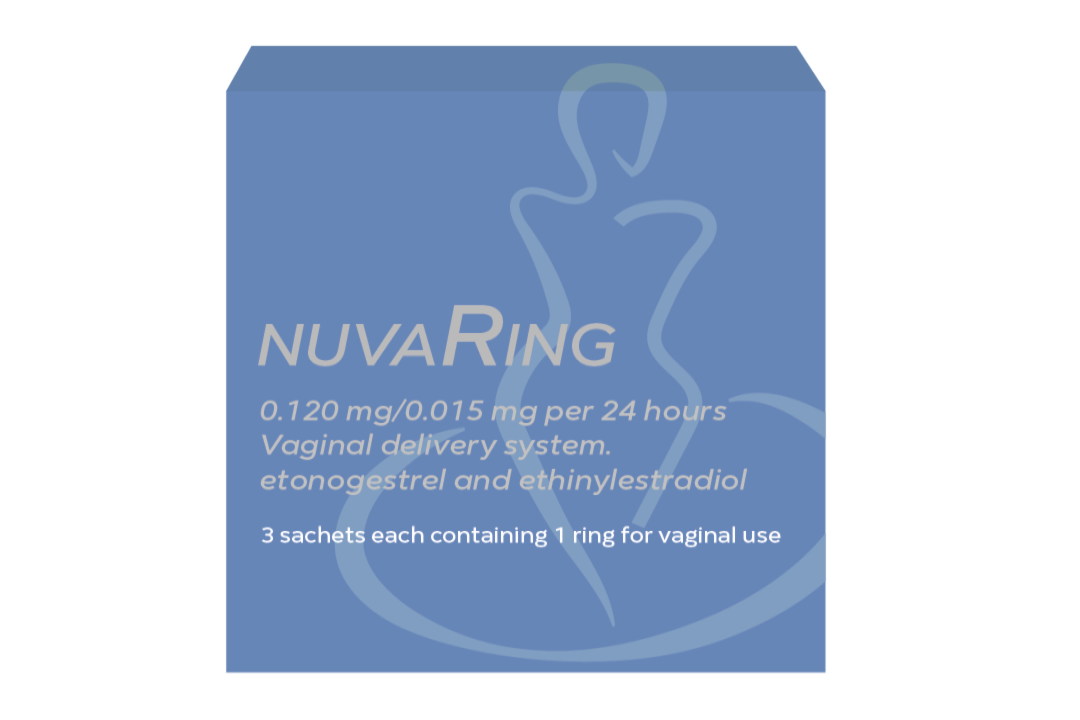Contraceptive ring
A small, soft plastic ring that sits inside the vagina. It releases oestrogen and progestogen into the body to prevent pregnancy.
Choose your brand
Both brands contain the same active hormones and work in the same way. SyreniRing can be prescribed for up to 3, 6 or 12 months. NuvaRing can be prescribed 3 months at a time.
About the contraceptive ring
How to use the contraceptive ring
You can insert the ring yourself. Squeeze it between your thumb and forefinger and push it gently into your vagina until you reach a place that feels comfortable. It cannot get 'lost' inside you, as the cervix stops it from moving into your womb.
Leave it in place for 21 days. Once you take it out, you can either have a 7 day break or you can put in a new ring immediately.
You’re protected against pregnancy during the break as long as you put a new ring in after the break and wear this new ring for at least 7 days.
You can miss out on having a ring-free week if you prefer not to have monthly bleeding. You may still have some bleeding or spotting. It's safe to use rings back to back but you need to remember to take one out after 21 days and insert a new one.
You can wear the ring during sex, or you can take it out - it’s up to you. If you do take it out for sex, you must remember to replace it within 3 hours or you risk losing the protection. You might then need emergency contraception.
How the ring works
The vaginal ring is a small, soft plastic ring that you place inside your vagina. It releases the hormones oestrogen and progestogen.
These hormones work in 3 ways to prevent pregnancy:
they stop ovulation
they thicken the mucus that sits at the entrance of the womb, which makes it harder for sperm to get through and reach an egg
they thin the lining of the womb, so in the unlikely event that an egg does get fertilised, it's hard for it to attach to the womb and become a pregnancy.
When used perfectly, the vaginal ring is more than 99% effective at preventing pregnancy. With average use, it's 91% or more.
Side effects of the ring
Some women notice more breast tenderness, mood changes, nausea and changes in their desire for sex in the first few months after starting the NuvaRing. These symptoms can ease as your body gets used to the hormones.
The ring may not be suitable if you are taking certain medications.
Health risks and benefits of the ring
Sometimes using the ring can cause your blood pressure to rise. In very rare cases, women develop a blood clot (thrombosis) when using the ring. We’ll assess your risk of this when you order.
The ring can slightly increase your risk of breast cancer. And it can lower your risk of cancer of the womb and cancer of the ovaries.
Do you need help with something else?
Find your local sexual health clinic.
Find your local pharmacy.




